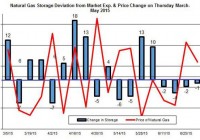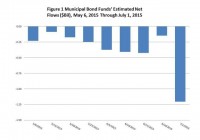While The Athens Exchange Is Closed, The Greece ETF Show Goes On
Investors can still trade Greece through an ETF while Athens Stock Exchange was closed. GREK showing larger discount to net asset value. Investors should understand risks of ETFs that track international markets. Exchange traded funds try to reflect the performance of an underlying market. However, there are times when an ETF may diverge from the net asset value, especially with international markets. For example, the Global X FTSE Greece 20 ETF (NYSEArca: GREK ) is was trading at a 10.4% discount to its NAV on Monday, according to Morningstar data. GREK plunged 8.9% Monday on over four times its average daily volume after Greece rejected austerity measures demanded by international creditors in a referendum vote over the weekend. The Greece ETF has been swinging in volatile trading over the past week . ETFs, more or less, consistently reflect the movement of their net asset value, or combined value of all securities in an ETF’s portfolio divided by the number of ETF shares outstanding, as market makers or authorized participants create or redeem ETF shares by buying or selling baskets of underlying securities for ETFs. Since ETFs trade like any other stock on an exchange, the ETF’s price can fluctuate throughout the day. ETFs typically update their underlying trading value, calculating the approximate NAV every 15 seconds throughout the trading day. In domestic equity ETFs, the NAV works as intended. The NAV provides a fair value of the ETF, which basically means the fund is trading in line with its underlying assets with little or no tracking error. This also allows investors to get a better view of whether or not they are over or underpaying an ETF. When the ETF’s price is lower than the NAV , the ETF is said to be at a “discount” – the ETF is valued less than the fund’s overall holdings. If the ETF’s price is above the NAV, the ETF is said to trade at a “premium” – the ETF is trading higher than what the underlying holdings are worth. However, the NAV gets cloudier when looking into other markets. For instance, international markets are not open in the same time zone as U.S. markets, but foreign stock and bond ETFs are still trading on U.S. exchanges. Since the NAV is taken based on the last price at which it was traded, the NAV may not move during normal hours. Consequently, the NAV for international ETFs, along with most commodity and fixed-income funds, may represent a stale number as these markets don’t necessarily trade during normal U.S. market hours. In the case of Greece, the Athens Stock Exchange has been closed for at least a week, following the June 28 decision by the Systemic Stability Council for a week-long closure of the country’s banks and local stock market, according to ekathimerini . The Greek bourse remains closed Monday. Consequently, the traded value of GREK has deviated considerably from its NAV – the ETF is currently trading at a much lower value to its constituents due to the underlying market closure. The last time something similar occurred was during the so-called Arab Spring of 2011 when Egyptian markets were shut down for two months, but U.S. investors were still able to trade shares of the Market Vectors Egypt Index ETF (NYSEArca: EGPT ) . Nevertheless, GREK ETF investors may still get a general sense of where the ETF is going through indirect means. For instance, Coca-Cola HBC, which makes up 21.4% of GREK, dipped 3.9% over the past week while the National Bank of Greece (NYSE: NBG ), which makes up 9.5% of GREK, saw the value of its American Depository Receipts pare recent gains to fall flat for the week. Max Chen contributed to this article . Disclosure: I/we have no positions in any stocks mentioned, and no plans to initiate any positions within the next 72 hours. (More…) I wrote this article myself, and it expresses my own opinions. I am not receiving compensation for it. I have no business relationship with any company whose stock is mentioned in this article.

